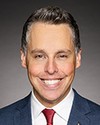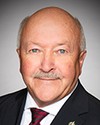Thank you very much, Mr. Chair.
I would just like, at the beginning of my time, to give notice of a motion.
The motion is as follows: “That the committee undertake a five-meeting review of the impact of the carbon tax on the transportation sector and the increased costs it places on Canadians, that the Minister of Transport appear on this matter, and that the committee find the additional resources necessary to accommodate these meetings.”
I'm just giving verbal notice of that. We'll get the written notice to the clerk as soon as possible.
I'm now moving on to my questions.
I asked the Via HFR folks what they envisioned the per passenger subsidy would be to operate the Toronto-Quebec City service. They said they hadn't gotten that far down the process.
Mr. Péloquin, can you confirm what the current per passenger subsidy is, on average, for a passenger travelling from Toronto to Quebec City?




